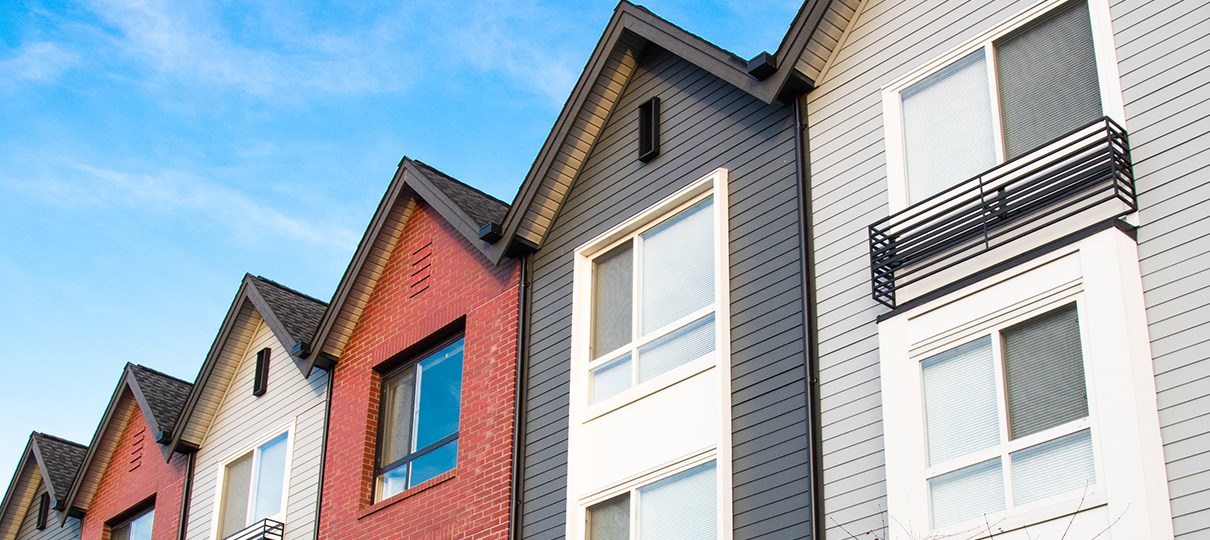Homeownership supports stable housing and is one of the primary ways households build wealth, enabling greater participation in the economy. Yet affordability issues have increasingly put homeownership out of reach, especially for low- and moderate-income households or first-time buyers. Regions with more job opportunities tend to have both higher housing costs and fewer starter homes, which means that many families are not able to get on the first rung of the homeownership ladder. As part of our work to understand the economic experiences of the people we serve, this post highlights takeaways from recent research and a webinar we hosted on homeownership trends and opportunities in the Twelfth Federal Reserve District.
Recent trends in homeownership for low- and moderate-income buyers
Despite pandemic-era disruptions to the homebuying market, including household migration and surging home prices, our research found that homebuying activity was elevated in 2020 and 2021 and that low- and moderate-income buyers, along with certain other groups, participated in the homebuying market at rates above their pre-pandemic levels. Consistent with media narratives around household mobility, homebuying in the urban areas of the nation’s largest metros dipped in 2020, although it recovered in 2021. Pre-pandemic trends of growth in smaller metro and nonmetro areas continued during this period. By 2022, however, the number of homebuyers shrank to below 2018 levels, perhaps as changing market conditions reduced affordability and made it challenging to purchase. Our newly released data tool allows users to explore these headline trends for different places and types of buyers.
The promise of homeownership options beyond the traditional single-family home
These general trends underscore that lower-income homebuyers could benefit from paths to homeownership beyond the traditional detached, single-family home. Our research shows that, although they make up a smaller part of the market than single family, a range of options exists—such as condos, duplexes and homes with accessory dwelling units (ADUs) or backyard cottages—that tend to offer more affordable price points for first-time buyers or those with more limited resources.
At our recent webinar on this topic, experts from regional and national housing organizations highlighted the ways that different homeownership types can increase affordability for first-time buyers and low- and moderate-income (LMI) households. At the same time, they noted that the typical options of either renting in a multi-family building or purchasing expensive single-family homes leave a lot of potential homeownership options off the table, including those often referred to as the missing middle.
While missing middle—and other non-single-family options—can create a more accessible path to homeownership, participants highlighted several challenges to increasing the availability of these options, noting:
- Missing middle housing is often harder to finance than single-family or larger multifamily developments. In part, this is due to differences in available capital for larger-scale developments (which typically involve debt from banks and equity from different capital sources such as pension funds or other investors) versus smaller-scale projects and homeowners wishing to add a unit to their home. Those projects are often self-financed by dipping into a savings account or refinancing a home, although that option is not as available as it was even five years ago. One speaker noted that loan options that do exist often leave a gap of roughly 40–60%, if not higher.
In addition, speakers noted that staff-time and overhead costs are often the same whether building a small development or a large one, which makes smaller, infill projects less attractive. Moreover, utilizing support from tax credits and municipalities for subsidizing below market affordable homeownership is often more feasible for larger developments, but for smaller projects, speakers suggested that developers might need to look to other avenues to bring down costs (e.g., modular and manufactured housing) and preserve long term affordability (e.g., community land trusts (CLTs)).
Land acquisition strategies for missing middle can also affect financial feasibility. If not developing on a vacant lot, for instance, developers might need to consider how easily a single-family home could be converted into a duplex, or whether developing a four-plex or six-unit building might require tearing down the original structure. To bear the additional costs associated with the latter approach, speakers noted that smaller developers might need tools like loan guarantees or credit enhancements to make them—and the greater return on investment and addition to the housing supply—feasible.
- Condos sometimes face unique constraints. In some cases, multifamily housing construction costs are higher because of liability costs related to potential defects in new condos.1 In some states, construction defect liability is resolved through litigation and settlements with condo owners, while in others, developers have the opportunity to make repairs themselves or contribute to a repair insurance pool or a third-party warranty program. Research has also found that increasing insurance costs may result in developers building more rental housing instead of condos. Some states, including Hawaiʻi and Utah, have taken steps to address some of the challenges related to condo construction defects to help incentivize multifamily homeownership.2
Even with these challenges, panelists highlighted that having more options for homeownership could extend the benefits of homeownership to more first-time buyers and LMI households. Speakers noted it could also enable better use of first-time homebuying assistance programs. These programs are often underused because of the lack of attainable starter homes available to first time or LMI homebuyers. Panelists also emphasized the positive effects of homeownership on financial stability and economic participation for low- and moderate-income households. They noted that supporting low- and moderate-income homeownership can have positive ripple effects for housing stability in communities because, in hard times, one stable residence can be a source of stability for more than one household.
End Notes
1. Alameldin, Muhammad, and Sarah Karlinsky. 2024. “Construction Defect Liability in California: How Reform Could Increase Affordable Homeownership Opportunities.” Berkeley, CA: Terner Center for Housing Innovation, University of California, Berkeley. https://ternercenter.berkeley.edu/research-and-policy/construction-defect-liability/
2. Ibid.
The views expressed here do not necessarily reflect the views of the management of the Federal Reserve Bank of San Francisco or of the Board of Governors of the Federal Reserve System.





